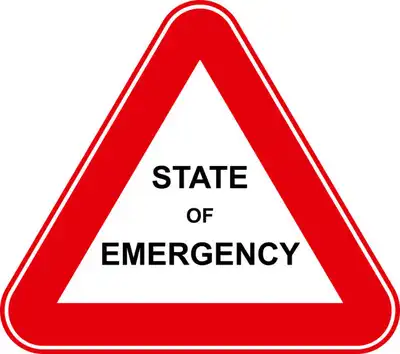What Is A State Of Emergency In South Africa?

Invoking temporary emergency powers to restore public order and peace is what the State of Emergency Act does. The Constitution outlines three conditions that must be met before such a state of emergency can be declared:
- It must be established by a parliamentary act;
- It must be necessary to restore peace and order
- It must be established when the life of the country is in danger due to war, invasion, widespread insurrection, disorder, a natural disaster, or other public emergency.
What Is the Purpose of A State Of Emergency Act
The purpose of the State of Emergency Act 64 of 1997 is:
To authorize the President to issue regulations in response to any such declaration
To provide for matters related thereto, and to allow for the declaration of a state of emergency.
Commencement
What Happens In A State Of Emergency In South Africa?
In a state of emergency, a government is given the authority to implement measures for the safety and protection of its citizens that it would not typically be allowed to. During a natural disaster, civil unrest, armed conflict, medical pandemic or epidemic, or any other biosecurity risk, a government may declare such a state. Roman law has a concept called “justitium” that allows the Senate to propose a final decree (senatus consultum ultimum) that is not subject to disagreement but aids in saving lives during times of conflict..
What Was The First State Of Emergency In South Africa?
The Eastern Cape and the Pretoria-Witwatersrand-Vaal (PWV) region were the initial areas covered by the first State of Emergency, which was declared on July 20, 1985. Numerous thousands were held. A few months later, the Western Cape was added to the State of Emergency. The declaration, which came soon after the Peace Festival, effectively stopped the ECC’s activities in Johannesburg. ECC members were frequently arrested and subjected to harassment during this time. Clare Verbeeck, the executive director of the Johannesburg ECC, was questioned on July 30, 1985. Her home was searched, and a lot of papers were taken away. Another active member, Sylvia Brett, had her home raided. Gavin Evans and Ian Moll were two of the other members who were imprisoned the following month.
- How to Win the Lottery in South Africa
- Does Cash App Work In South Africa?
- Which Law Protects Against Gender-Based Violence In South Africa?
- How To Win Small Claims Court In South Africa?
- How is Money Made in South Africa?
- Who Is The Richest Black Person In South Africa?
- How to Get A Restraining Order in South Africa?
- Where to Study Biomedical Engineering in South Africa?
- What Is Local Government In South Africa?
State of Emergency II
The second declaration, in contrast to the State of Emergency of 1985, was carried out across the entire country. The media was no longer allowed to report on political unrest in any way. The anti-conscription movement, including COSG, understood that in the new political environment, it was necessary to “clarify” its role. 20 The ECC had to change its priorities in response to this new environment. The ECC found it more and more challenging to “overcome the effects of the State of Emergency.” 21 The activists needed to be “disciplined and well trained” in order for the organization to survive. 22
Importance of the State Of Emergency Calls
For many ECC members, their personal and professional lives were significantly impacted by these two time periods, which were crucial in determining the End Conscription Campaign’s ideological and strategic direction. Meetings were frequently interrupted by hecklers who “booed, hissed, and clapped” in an effort to discourage those involved. This harassment was experienced by members even before the first State of Emergency was declared.
In South Africa, each declaration of a state of emergency had potentially revolutionary effects. When important choices or changes must be made, it is known to be used. Despite this, they are used in accordance with established procedures.
Members were compelled to reevaluate and democratize their leadership as a result of the first State of Emergency. Up to 800 soldiers were stationed in the townships, and there was still mandatory military service.
Share This





